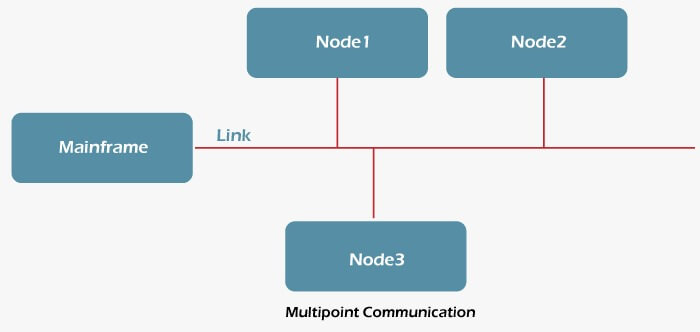Difference Between Point-to-Point and Multi-Point CommunicationCommunication, as we all know, is the process of sending information from a source to a destination using any available mode like audio, video, signal, or even text. This communication could be simple, including only one sender and one receiver, or it could involve several senders and receivers. We can distinguish between Point-to-Point and Multi-Point communication based on the number of senders and receivers in a communication. The key distinctions between point-to-point and multi-point communication are listed below. Point-to-Point Communication
A point-to-point communication is also known as P2P. In the context of telecommunication, it is an established connection between two nodes that may be used to communicate back and forth. A basic telephone call, in which one phone is connected to another, and both nodes can send and receive audio, is the most common example of point-to-point communication. These P2P connections were first established utilizing circuit-switched landlines in the early days of telephony. However, point-to-point communication in modern networks nowadays is made possible by complex fibre-optic networks. P2P connections of various forms can transmit many types of data, including digital and analog signals. The point-to-point connection is one of the line configuration methods that explains how two communication devices are connected in a link. It is a unicast connection. A dedicated link exists between each pair of sender and receiver. The entire channel's capacity is reserved solely for packet transmission between the sender and receiver. If a point-to-point connection is used to make a network, the packets must travel through a number of intermediate devices. The length of the link between the many intermediate devices may vary. As a result, in a point-to-point network finding the shortest distance to reach the receiver is crucial. Multipoint Communication
Multi-point communication is the communication that occurs when a communication channel is shared not just between two devices or nodes but also between numerous devices or nodes participating in the conversation. A multipoint connection is one that connects more than two devices together. Multidrop line configuration is another name for the multipoint connection. Numerous devices share a single link in a multipoint connection. As a result, it is possible to say that all devices connected to the link temporarily share the channel capacity. The devices use a turn-by-turn link, which is called a time-shared line configuration. In a broadcast network, the packet transmitted by the sender is received and processed by each device on the link. However, the receiver evaluates whether the packet belongs to it or not based on the address field in the packet; if it does not, the packet is discarded. If the packet belongs to the recipient, store it and respond appropriately to the sender. Difference Between Point-to-Point Communication and Multi-Point Communication
Next TopicDifference between
|
 For Videos Join Our Youtube Channel: Join Now
For Videos Join Our Youtube Channel: Join Now
Feedback
- Send your Feedback to [email protected]
Help Others, Please Share










